#IONITY Network
Explore tagged Tumblr posts
Text
Exploring the Latest Innovations in Electric Vehicle Charging
The adoption of electric vehicles (EVs) is on the rise globally, and as a result, the demand for efficient and accessible EV charging infrastructure has increased dramatically. To meet this growing need, innovators and industries are constantly pushing the boundaries of technology and developing cutting-edge solutions to address the challenges associated with EV charging. In this blog post, we…
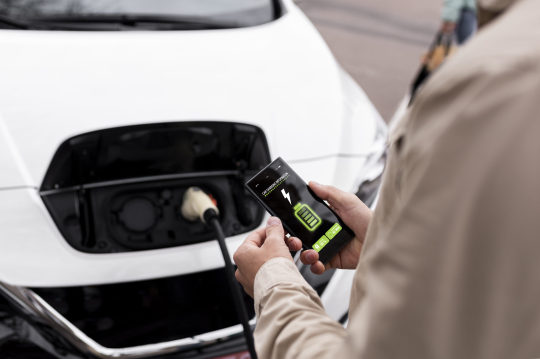
View On WordPress
#Bidirectional Charging#Dynamic Charging#Electric Mobility Innovations#Electric Vehicles (EV)#EV Charging Technology#Future of Transportation#Green Technology#IONITY Network#Renewable Energy Integration#sustainable transportation#Tesla Supercharger#Ultra-Fast Charging Stations#Vehicle-to-Grid (V2G)#Wireless EV Charging
2 notes
·
View notes
Text
Automotive EV Charging Infrastructure Market: Trends, Growth, and Future Prospects
The automotive electric vehicle (EV) charging infrastructure market is rapidly transforming the global transportation landscape, driven by the increasing adoption of EVs and supportive government initiatives. This article explores the current trends, market growth factors, key challenges, and the future outlook of the EV charging infrastructure industry.
Market Overview
The global automotive EV charging infrastructure market has witnessed exponential growth, with more governments promoting green energy and reduced carbon footprints. The transition from internal combustion engines (ICEs) to EVs has necessitated robust charging networks to support the growing fleet of electric vehicles. The market includes public charging stations, private charging networks, and innovative solutions such as wireless charging.
Key Trends in the EV Charging Infrastructure Market
Rise of Fast Charging Stations Consumers demand quick and efficient solutions, leading to increased investments in DC fast charging stations that can charge vehicles in minutes instead of hours. Companies like Tesla, ChargePoint, and Ionity are driving innovation in this space.
Integration of Renewable Energy The market is witnessing a shift towards solar-powered charging stations and the integration of renewable energy to reduce dependency on traditional power grids.
Smart Charging and IoT Solutions Smart charging infrastructure equipped with IoT capabilities allows users to monitor, manage, and optimize charging remotely. These systems also enable load balancing, reducing stress on electricity grids.
Wireless and Bidirectional Charging The development of wireless charging pads and vehicle-to-grid (V2G) technology is gaining traction, offering convenience and additional functionalities for EV owners.
Factors Driving Market Growth
Government Support and Policies Subsidies, tax incentives, and investments in EV infrastructure are boosting market growth. Countries like the U.S., China, and Germany have set ambitious EV adoption targets, accelerating the development of charging networks.
Expansion of EV Fleet The increasing adoption of EVs among consumers and fleet operators is driving the demand for accessible and widespread charging infrastructure.
Urbanization and Smart City Projects Growing urban populations and the rise of smart cities are pushing governments to establish advanced EV charging networks as part of sustainable urban mobility plans.
Corporate Collaborations and Investments Major automotive manufacturers and tech companies are collaborating to create seamless charging experiences. For example, Volkswagen's Electrify America initiative is expanding public charging networks across the U.S.
Challenges in the EV Charging Infrastructure Market
High Initial Investment: Setting up charging stations, particularly fast chargers, requires significant capital expenditure.
Grid Stability Issues: Increasing EV adoption may strain existing power grids without upgrades and smart energy management systems.
Consumer Convenience: Limited charging availability in rural areas and interoperability issues between different charging networks remain barriers.
Future Outlook
The global EV charging infrastructure market is projected to grow at a compound annual growth rate (CAGR) of over 20% in the coming years, driven by technological advancements, government mandates, and increasing consumer acceptance of EVs. The Asia-Pacific region is expected to lead the market, with significant contributions from China, India, and Japan. Meanwhile, Europe and North America continue to invest heavily in building robust networks to support their ambitious electrification goals.
Buy the Full Report for More Insights into the Automotive EV Charging Infrastructure Market Forecast, Download a Free Report Sample
0 notes
Link
0 notes
Text
Electric Vehicle Sector | Market Size & Share
The global electric vehicle (EV) market has witnessed unprecedented growth over the past decade, driven by advancements in technology, supportive government policies, and increasing environmental awareness. As we look toward a future dominated by sustainability, the EV market stands as a beacon of innovation and progress. This blog delves into the intricacies of the EV market, covering its size, share, growth, trends, key players, and challenges, ultimately concluding with insights into the market's trajectory.

Market Size, Share, and Growth
Market Size
As of 2023, the global electric vehicle market size was valued at approximately USD 230 billion. This figure represents a significant leap from the early 2010s when the market was in its nascent stages. The rapid adoption of EVs across various regions, particularly in Asia-Pacific, Europe, and North America, has been a primary driver of this growth.
Market Share
The EV market is highly fragmented, with several key players holding substantial shares. Tesla, Inc., leads the market with a share of around 15%, followed by other prominent players such as BYD Company Ltd., Volkswagen Group, and General Motors. These companies have established themselves as frontrunners through extensive R&D, innovative product offerings, and strategic partnerships.
Market Growth
The EV market is expected to grow at a compound annual growth rate (CAGR) of 22.6% from 2023 to 2030. This robust growth is attributed to several factors, including increasing investments in EV infrastructure, advancements in battery technology, and a growing emphasis on reducing carbon emissions.
Market Trends
Technological Advancements
One of the most significant trends in the EV market is the continuous technological advancements. Battery technology, in particular, has seen remarkable progress, with lithium-ion batteries becoming more efficient, affordable, and sustainable. The development of solid-state batteries is poised to revolutionize the industry further by offering higher energy densities and faster charging times.
Government Initiatives and Policies
Governments worldwide are playing a pivotal role in the proliferation of EVs through various initiatives and policies. Subsidies, tax incentives, and grants are being provided to both manufacturers and consumers to encourage the adoption of EVs. For instance, the European Union has set ambitious targets for reducing CO2 emissions, which has significantly boosted the EV market in the region.
Charging Infrastructure Expansion
The expansion of charging infrastructure is crucial for the widespread adoption of EVs. Companies and governments are investing heavily in the development of fast-charging networks. Tesla’s Supercharger network and Ionity’s high-power charging stations in Europe are prime examples of how the infrastructure is evolving to meet the growing demand for EVs.
Emergence of New Market Entrants
The EV market has seen the emergence of several new players, including tech giants like Apple and traditional automakers like Ford and BMW entering the fray with new EV models. This influx of competition is driving innovation and pushing established players to continuously improve their offerings.
Market Players
Tesla, Inc.
Tesla remains the undisputed leader in the EV market. With a market share of approximately 15%, the company has set benchmarks for performance, range, and autonomous driving capabilities. Tesla’s Model 3, Model S, and Model X have been instrumental in popularizing EVs globally.
BYD Company Ltd.
BYD, a Chinese automotive giant, holds a significant share of the EV market. Known for its electric buses and commercial vehicles, BYD has also made strides in the passenger vehicle segment. The company’s commitment to sustainability and innovation has positioned it as a key player in the EV industry.
Volkswagen Group
Volkswagen has made a strong entry into the EV market with its ID. series. The ID.3 and ID.4 models have been well-received, helping Volkswagen secure a notable market share. The company’s commitment to transitioning from traditional combustion engines to electric drivetrains is evident in its substantial investments in EV technology.
General Motors
General Motors (GM) has embraced the EV revolution with its Chevrolet Bolt EV and the upcoming GMC Hummer EV. GM’s Ultium battery platform is a testament to its focus on innovation and scalability in the EV sector. The company aims to deliver over one million EVs globally by 2025.
Market Challenges
High Initial Costs
Despite the declining costs of EVs, the initial purchase price remains higher than that of traditional internal combustion engine vehicles. This cost disparity can deter price-sensitive consumers, particularly in developing markets.
Charging Infrastructure
While significant progress has been made in expanding charging infrastructure, it remains a critical challenge. The availability of charging stations, especially in rural and remote areas, is limited. This limitation can lead to range anxiety among potential EV buyers.
Battery Disposal and Recycling
The environmental impact of battery disposal and recycling is a growing concern. As the number of EVs on the road increases, so does the need for sustainable battery recycling solutions. Addressing this issue is crucial to maintaining the environmental benefits of EVs.
Range Limitations
Although advancements in battery technology have improved the range of EVs, it still falls short compared to traditional vehicles. Long-distance travel and the availability of charging stations along routes remain significant challenges.
Conclusion
The electric vehicle market is on a trajectory of remarkable growth and transformation. Technological advancements, supportive government policies, and increasing consumer awareness are driving the market forward. However, challenges such as high initial costs, charging infrastructure, and battery disposal need to be addressed to sustain this growth. Key players like Tesla, BYD, Volkswagen, and General Motors are leading the charge, continuously innovating and expanding their market presence. As the industry evolves, the emergence of new entrants and the expansion of charging infrastructure will play pivotal roles in shaping the future of the EV market.
#EV Market#Electric Vehicle Market#EV Industry#Electric Vehicle Industry#EV Market share#E-Bike market
0 notes
Link
(..)In Lithuania, Latvia, and Estonia, Ionity will have stations with Circle K fuel stations. Estonia will have two locations for them: Märjamaa and Arumetsa. Lithuania and Latvia will have only one. While it will be in Bijotai in Lithuania, between Klaipėda and Kaunas (allowing EV traffic between these cities), Latvia will have its Ionity fast-charging station in Stapriņi, which is pretty close to Riga, the country’s capital(..)
#IONITY#ev charging infrastructure#Circle K#ev charging station#Baltic States#Estonia#Latvia#Lithuania#Northern Europe#ev charging network#ev road trip#fossil fuel phase-out
5 notes
·
View notes
Text
EVs Will Cost More For Some
EVs are slowly starting to look unappealing for some #ev #electric #cars #IONITY #tesla
People choose to drive EVs because they offer a convenient and earth friendly way to commute around (depending on who you ask). For Europeans however, things are about to change. I was doing my daily run of my news feeds when I came across an article discussing the price of charging on the IONITY charging network in Europe. Loving the idea of an EV world, it was mandatory for me to read the…

View On WordPress
0 notes
Photo
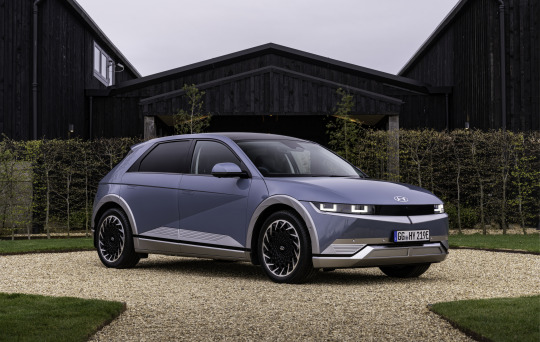
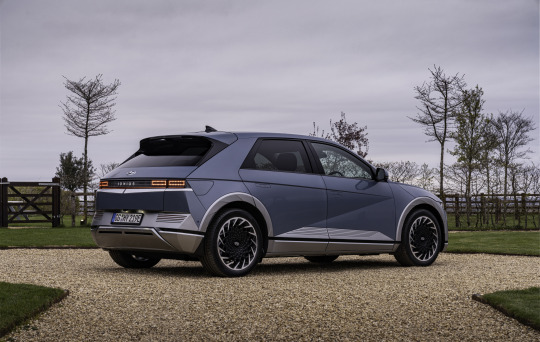
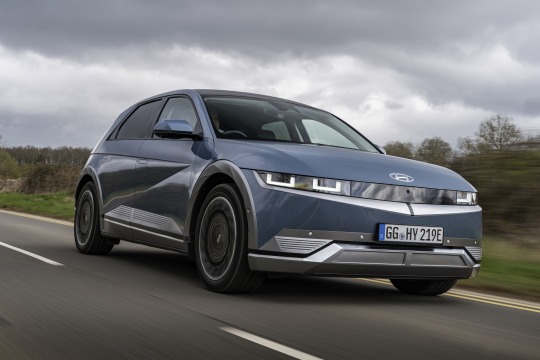
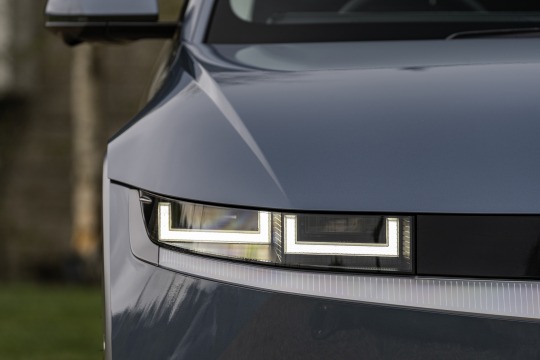
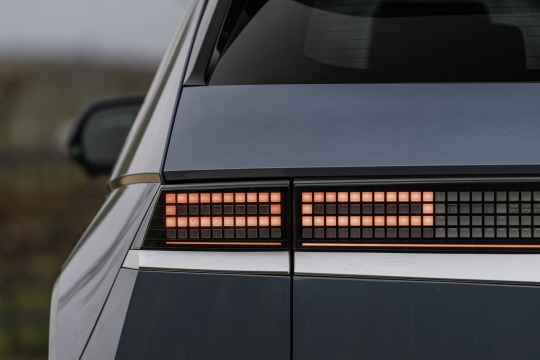
Hyundai Announces IONIQ 5 Pricing & Specs
Hyundai Motor UK has announced the pricing and specification of IONIQ 5, the first car in the new IONIQ brand and the first Hyundai built on a new dedicated Electric-Global Modular Platform.
IONIQ 5’s design explores a new design freedom offered by a dedicated BEV platform and mirrors the design of the 45 concept first seen at the 2019 Frankfurt Motor Show. The 45 concept was in itself inspired by the original Hyundai Pony Coupe Concept from 1974. The IONIQ 5 highlights Hyundai’s 45-year journey to become a part of customer’s lifestyles, creating a common thread from past to present and future.
The IONIQ 5 is built upon Hyundai Motor Group’s dedicated battery electric vehicle architecture called Electric-Global Modular Platform (E-GMP), enabling it to have unique proportions on an elongated wheelbase. With E-GMP, IONIQ 5 offers innovative interior design with eco-friendly materials in many touchpoints; strong performance mated with ultra-fast charging, a Vehicle-to-Load (V2L) function as well as advanced connectivity and driver assistance features that will offer the ultimate in-car experience while ensuring a high level of safety.
E-GMP provides IONIQ 5 flexibility in powertrain options, with customers having the choice of 4 battery and drive types; a 58kWh rear wheel drive with a combined range of up to 240 miles1, a 73kWh rear wheel drive with a combined range of up to 300 miles1, or a 73kWh all-wheel drive with a range of up to 287 miles1. IONIQ 5 features 800V charging as standard, which when combined with a 350kW ultra-rapid charger will provide 80% charge in just 18 minutes and 100km of driving range in 5 minutes. The system also supports both domestic wall box charging and mainstream public 400V high speed charging, using the motor and the inverter to convert the voltage from 400V to 800V for optimized charge times whenever possible.
IONIQ 5 will be available in 3 specification levels, SE Connect, Premium, Ultimate, which join the comprehensively equipped special launch edition Project 45.
Starting from £36,995, the IONIQ 5 SE Connect 58 kWh rear wheel drive delivers on Hyundai’s renowned comprehensive standard specification levels and includes 19” alloy wheels, cloth upholstery, produced using naturally derived polyester resin, driver and front passenger seat height adjustment, sliding rear seat adjustment, interior mood lighting, 12.3” LCD audio, visual and navigation system with DAB, Apple Car Play™ and Android Auto™, LCD drivers instrument cluster, wireless phone charging for compatible devices, rear view camera, LED Multi-Faceted Reflector headlamps, LED stop, tail and turn lamps, rear parking sensors, electric parking brake, Navigation based Smart Cruise Control (NSCC) is standard, which will automatically adjust speed to stay within the speed limit and also automatically adjust speed to cater for road layout., Highway Drive Assist (HDA), Intelligent Speed Limit Assist (ISLA), Lane Keep Assist with Lane Following Assist (LKAS + LFA), Driver Attention Alert and frunk storage under the signature clamshell bonnet.
Available from £39,295, the IONIQ 5 Premium 58kWh rear wheel drive builds on the SE Connect trim by adding a 4 way power driver’s seat, heated driver and front passenger seats and steering wheel, auto dimming rear view mirror, dual LED projector headlamps, power tailgate, chrome side molding, Highway Drive Assist Level 2 (HDA II) with automatic lane change function, Forward Collision Assist with Junction function (FCA JX) and Blindspot Collision Avoidance assist (BCA). Premium trim also offers customers the optional Vehicle 2 Load pack (V2L). The V2L function allows customers to freely use or charge any electric devices, suppling up to 3.6 kW of power. Using a converter, customers can charge high-power electric equipment, consumer electronics or even charge another electric vehicle. The IONIQ 5 Premium is also available with the 73kWh battery in rear wheel and all- wheel drive.
The IONIQ 5 Ultimate 58kWh rear wheel drive completes the IONIQ range with a high specification including leather seat coverings, solar and privacy glass, chrome door garnish, black gloss beltline, electrically adjustable and ventilated front seats, heated rear seats, BOSE premium sound system, head up display with augmented reality, standard Vehicle 2 Load (V2L), sliding center console and alloy pedals. Customers can also specify the Eco Pack which comprises Battery Heating system and Heat Pump and the Tech Pack with Front Memory Seats, Relaxation Premium Seats, BVM (Blind View Monitor), PCA ( Parking Collision Avoidance Assist - Reverse), RSPA (Remote Smart Parking Assist), SVM ( Surround View Monitor). The Ultimate specification is also available with the 73kWh battery in rear wheel and all- wheel drive, both of which upgrade to 20” alloy wheels.
All IONIQ 5 models come with a 1 year subscription to the IONITY charging network, Hyundai’s industry leading 5 Year Unlimited Mileage Warranty, 8 Year/100,000 Mile High Voltage Battery Warranty, 5 Year Annual Health Check, 3 year MapCare navigation update program, Roadside Assistance package, and 12 Year Anti Corrosion Warranty.
32 notes
·
View notes
Photo

Image credit: @tesla1907 . . . . . . Latest Tesla News: Ionity’s pricing structure is a far cry from the Tesla Supercharger Network — to learn more, read our blog post today at EVANNEX.com (link in bio). . . . . . . Also, feel free to follow us on Twitter (evannex_com) for updates (3x/day or more) including this particular news item. EVANNEX is a top Tesla news source — check out our blog for daily news items. EVANNEX content has been published on InsideEVs, Teslarati, CleanTechnica, and Inverse. We also host online courses to learn more about electric cars at EVU (Electric Vehicle University). . . . . . . EVANNEX also has the largest portfolio of must-have Tesla accessories and parts worldwide. For more, check us out at: evannex.com (link in profile). . . . . . . Please note: Our IG account typically reposts our favorite, stunning Tesla images from others on IG — all image credits are at the beginning of the post. If, for some reason, the image is incorrectly attributed or the user would prefer we don’t use the image, please promptly email us at: [email protected] — we’ll delete the post if you’d prefer. . . . . . . Website: evannex.com (link in profile) . . . . . . #tesla #teslas #tsla #teslamotors #teslamodels #teslamodelx #teslamodel3 #teslamodely #teslaroadster #teslacybertruck #cybertruck #teslasupercharger #teslalife #teslaowner #teslacar #teslacars #teslaenergy #powerwall #gigafactory #elonmusk #spacex #electricvehicle #electriccar #EV #evannex #teslagigafactory #mytesla https://www.instagram.com/p/B8bPBwiHrEF/?igshid=1ergk7xublken
#tesla#teslas#tsla#teslamotors#teslamodels#teslamodelx#teslamodel3#teslamodely#teslaroadster#teslacybertruck#cybertruck#teslasupercharger#teslalife#teslaowner#teslacar#teslacars#teslaenergy#powerwall#gigafactory#elonmusk#spacex#electricvehicle#electriccar#ev#evannex#teslagigafactory#mytesla
2 notes
·
View notes
Text
Ionity inaugurates its largest charging station in Italy
Ionity has just added 18 charging stations at once, a record, to its European network which has more than 2,000. The Ionity charging network has inaugurated a new station in Affi, on Lake Garda, Italy, more precisely at the exit of the A22/E45 motorway “Lago di Garda Sud” and therefore at a strategic location between Europe mainland, northern and southern Italy. This new site has 18 terminals,…

View On WordPress
0 notes
Text
Mercedes-Benz Plans to Build U.S. Electric Car Charging Network

Mercedes-Benz announced Thursday that it will set up a network of more than 2500 high-powered chargers across the United States by 2027, an indication that the German automaker has stepped up its involvement in electric vehicles, taking a page from Tesla's blueprint. Fast chargers which are distributed across 400 stations are operated beneath the Mercedes brand. The owners of Mercedes' vehicles will enjoy a higher rate of access but the network will also be accessible to vehicles from other manufacturers. Tesla began to build charging stations in the past and this network has been vital to the success of the automaker by easing the anxieties of buyers who don't have enough charging stations to plug their vehicles into and end up at the side or on the side of the road. These U.S. fast chargers work only for Tesla automobiles, but Tesla has stated that it's going to open up this network up to different brands. Mercedes's proposed charging network is an indication that Mercedes, which has been unable to retain customers from Tesla and is now determined to make electric cars a reality. The company launched the first battery manufacturing facility located in Alabama and started building an electric vehicle for sport and utility, called the EQS in its facility close to Tuscaloosa, Ala. If it's completed Mercedes's network is just one-third the size as Tesla's currently. However, it is far more ambitious than those undertaken from other traditional automakers. Electrify America has 3,400 fast chargers in 790 locations across the United States, but does not prominently showcase the Volkswagen brand, even since it is the German company was the one who founded the network and is the owner of a large portion of the company. "This is a strategic decision to put our money where our mouth is," Ola Kallenius who is the chief executive officer of Mercedes-Benz said to reporters on Thursday. The company, which is already as a partner of Ionity the European charger network plans to put Mercedes-branded charging stations in Europe as well as China but it is starting in the United States. Mercedes will share the costs of the network by partnering with MN8 which is a solar energy producer who will provide power to the stations. Mercedes and MN8 have announced plans to seek federal subsidies for companies who build chargers. Mercedes owners can now reserve time for charging on the internet, and it is made to work in conjunction with Mercedes automobiles, meaning that drivers will not have to do anything else than connect their vehicle to the network. Charges and payments "all happens under the covers, in an invisible way," Pasquale Romano, director of ChargePoint the maker of chargers that supply chargers to Mercedes the company, told reporters on Thursday. The automaker will begin making charging hubs later in the coming year. The gadgets will be able to pump energy into automobiles at 350 kilowatts each hour, which is much more than charging stations typically found within the United States. These hubs are located close to restrooms and restaurants Mercedes stated, such as near malls with luxury amenities that frequent Mercedes' wealthy customers. The hubs will feature security cameras to monitor the premises. Mercedes is working to address complaints from electric vehicle owners who are afraid to use chargers in remote areas. They will place the hubs placed in "a safe location," Markus Schafer, the chief technology officer at Mercedes told reporters, "not in the backyard of a shopping center next to the dumpster." Read the full article
0 notes
Link
0 notes
Text
Australia's Tritium opens new U.S. EV charger factory
Australia’s Tritium opens new U.S. EV charger factory
Australia’s own award-winning global EV infrastructure maker, Tritium, has opened a new production facility in the United States capable of making 30,000 DC fast-chargers per year. The Brisbane company, which lobbed on the Nasdaq stock exchange at the start of this year, is a major player in the US and Europe (the Ionity network) but maintains strong ties to its Australian roots and supplies much…

View On WordPress
0 notes
Text
Electric Vehicle Charging Services Market Overview
The global electric vehicle (EV) market has witnessed unprecedented growth over the past decade, driven by advancements in technology, supportive government policies, and increasing environmental awareness. As we look toward a future dominated by sustainability, the EV market stands as a beacon of innovation and progress. This blog delves into the intricacies of the EV market, covering its size, share, growth, trends, key players, and challenges, ultimately concluding with insights into the market's trajectory.
Market Size, Share, and Growth
Market Size
As of 2023, the global electric vehicle market size was valued at approximately USD 230 billion. This figure represents a significant leap from the early 2010s when the market was in its nascent stages. The rapid adoption of EVs across various regions, particularly in Asia-Pacific, Europe, and North America, has been a primary driver of this growth.

Market Share
The EV market is highly fragmented, with several key players holding substantial shares. Tesla, Inc., leads the market with a share of around 15%, followed by other prominent players such as BYD Company Ltd., Volkswagen Group, and General Motors. These companies have established themselves as frontrunners through extensive R&D, innovative product offerings, and strategic partnerships.
Market Growth
The EV market is expected to grow at a compound annual growth rate (CAGR) of 22.6% from 2023 to 2030. This robust growth is attributed to several factors, including increasing investments in EV infrastructure, advancements in battery technology, and a growing emphasis on reducing carbon emissions.
Market Trends
Technological Advancements
One of the most significant trends in the EV market is the continuous technological advancements. Battery technology, in particular, has seen remarkable progress, with lithium-ion batteries becoming more efficient, affordable, and sustainable. The development of solid-state batteries is poised to revolutionize the industry further by offering higher energy densities and faster charging times.
Government Initiatives and Policies
Governments worldwide are playing a pivotal role in the proliferation of EVs through various initiatives and policies. Subsidies, tax incentives, and grants are being provided to both manufacturers and consumers to encourage the adoption of EVs. For instance, the European Union has set ambitious targets for reducing CO2 emissions, which has significantly boosted the EV market in the region.
Charging Infrastructure Expansion
The expansion of charging infrastructure is crucial for the widespread adoption of EVs. Companies and governments are investing heavily in the development of fast-charging networks. Tesla’s Supercharger network and Ionity’s high-power charging stations in Europe are prime examples of how the infrastructure is evolving to meet the growing demand for EVs.
Emergence of New Market Entrants
The EV market has seen the emergence of several new players, including tech giants like Apple and traditional automakers like Ford and BMW entering the fray with new EV models. This influx of competition is driving innovation and pushing established players to continuously improve their offerings.
Market Players
Tesla, Inc.
Tesla remains the undisputed leader in the EV market. With a market share of approximately 15%, the company has set benchmarks for performance, range, and autonomous driving capabilities. Tesla’s Model 3, Model S, and Model X have been instrumental in popularizing EVs globally.
BYD Company Ltd.
BYD, a Chinese automotive giant, holds a significant share of the EV market. Known for its electric buses and commercial vehicles, BYD has also made strides in the passenger vehicle segment. The company’s commitment to sustainability and innovation has positioned it as a key player in the EV industry.
Volkswagen Group
Volkswagen has made a strong entry into the EV market with its ID. series. The ID.3 and ID.4 models have been well-received, helping Volkswagen secure a notable market share. The company’s commitment to transitioning from traditional combustion engines to electric drivetrains is evident in its substantial investments in EV technology.
General Motors
General Motors (GM) has embraced the EV revolution with its Chevrolet Bolt EV and the upcoming GMC Hummer EV. GM’s Ultium battery platform is a testament to its focus on innovation and scalability in the EV sector. The company aims to deliver over one million EVs globally by 2025.
Market Challenges
High Initial Costs
Despite the declining costs of EVs, the initial purchase price remains higher than that of traditional internal combustion engine vehicles. This cost disparity can deter price-sensitive consumers, particularly in developing markets.
Charging Infrastructure
While significant progress has been made in expanding charging infrastructure, it remains a critical challenge. The availability of charging stations, especially in rural and remote areas, is limited. This limitation can lead to range anxiety among potential EV buyers.
Battery Disposal and Recycling
The environmental impact of battery disposal and recycling is a growing concern. As the number of EVs on the road increases, so does the need for sustainable battery recycling solutions. Addressing this issue is crucial to maintaining the environmental benefits of EVs.
Range Limitations
Although advancements in battery technology have improved the range of EVs, it still falls short compared to traditional vehicles. Long-distance travel and the availability of charging stations along routes remain significant challenges.
Conclusion
The electric vehicle market is on a trajectory of remarkable growth and transformation. Technological advancements, supportive government policies, and increasing consumer awareness are driving the market forward. However, challenges such as high initial costs, charging infrastructure, and battery disposal need to be addressed to sustain this growth. Key players like Tesla, BYD, Volkswagen, and General Motors are leading the charge, continuously innovating and expanding their market presence. As the industry evolves, the emergence of new entrants and the expansion of charging infrastructure will play pivotal roles in shaping the future of the EV market.
0 notes
Video
youtube
Driving BMW i3 42 kWh to Ionity Alvdal
Bjørn Nyland
#IONITY#ev charging infrastructure#ev charging network#ev charging#Norway#fast charging#Europe#Northern Europe
4 notes
·
View notes
Text
Ionity will finally charge electric charging per kWh
Ionity will finally charge electric charging per kWh
On the occasion of the inauguration of its hundredth charging station in France, the Ionity network announces a major change in its pricing model: the motorist will now be billed per kWh and no longer per minute. France is the second largest European market for Ionity. A weight that is still increasing today since the charging network for electric cars exceeds one hundred stations. In this case,…

View On WordPress
0 notes
Photo



The Taycan Makes Appearance at Formula E Finale
Porsche visits the Big Apple: as part of the grand finale of the ABB FIA Formula E Championship in New York, the Taycan showed off its capabilities by completing several fast laps on the race circuit. “In Formula E, recuperation plays an important part in the race strategy.
The fast laps in New York represent the grand finale of the Porsche Triple Demo Run. A Taycan prototype has made three appearances on three continents in the space of three weeks, visiting China, Great Britain and the US – each important sales markets for the first all-electric sports car from Porsche. The livery on the roof paid tribute to each of the guest countries: in New York, the prototype featured a stars-and-stripes design.
The Taycan will be presented in September and will go on the market at the end of the year. Across the globe, there are already more than 20,000 serious prospective buyers for the four-door vehicle. The potential customers have put their names down on an option program list and made a down payment. Alongside the dynamic performance of the Taycan, a comprehensive charging infrastructure is key to the long-term success of electromobility. Porsche offers intelligent charging solutions for both the home and when on the road. The Porsche Charging System digital platform enables Europe-wide access to around 70,000 charging points from various providers and central billing via Porsche. In addition, both own fast charging stations and those installed in cooperation with charging networks such as Ionity in Europe or Electrify America in the USA are available.
41 notes
·
View notes